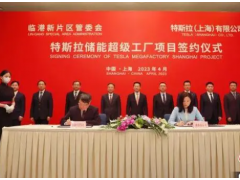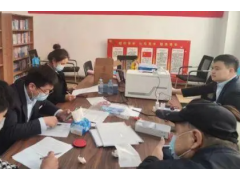On February 21, the Senate of the Philippine Congress formally approved the Regional Comprehensive Economic Partnership Agreement (RCEP) approval. The Philippines will then submit the instrument of ratification to the Secretariat of the Association of Southeast Asian Nations. RCEP will officially take effect for the Philippines 60 days after the approval letter is submitted.
China and the Philippines are close neighbors separated by a strip of water. In recent years, with the joint efforts of both sides, China-Philippines economic and trade cooperation has achieved fruitful results and fully demonstrated its vitality. Industry analysts believe that under the framework of RCEP, China-Philippines economic and trade cooperation will usher in more new opportunities.
Fruitful results in economic and trade cooperation
In recent years, China-Philippines economic and trade cooperation has continued to expand. Despite the adverse impact of the new crown epidemic, China-Philippines trade and investment cooperation has achieved growth against the trend.
China has been the largest trading partner of the Philippines for many years in a row. In 2022, the import and export trade volume between China and the Philippines will reach US$87.725 billion. The export of Philippine agricultural products to China has increased rapidly. At present, the Philippines has become China's largest import source of bananas and pineapples. Coconuts, avocados, and frozen fruits have also entered the Chinese market one after another. Fresh durians are about to be exported to China. The Philippines is an important exporter of agricultural products in Southeast Asia. The huge Chinese market is constantly bringing business opportunities to the Philippines, creating employment opportunities and increasing income for local growers. Philippine companies are also actively using the platform of the China International import Expo to expand the Chinese market. At the fifth CIIE, the booth area of the Philippines increased by 240 square meters compared with the previous one, and 19 new exhibitors were added.
The investment cooperation between the two sides is booming, and Chinese enterprises have achieved remarkable results in investment and cooperation in the Philippines. According to statistics from the Philippines, from 2016 to 2021, Chinese companies have invested about US$2.9 billion in agreements in the Philippines, involving service outsourcing, logistics, agriculture, steel, communications and other fields, showing strong vitality. At the same time, relevant major projects were also implemented smoothly. In October last year, the groundbreaking ceremony for the Davao-Samal Island Bridge, the Philippine sea-crossing bridge project undertaken by Chinese companies, was held in Davao, the third largest city in the Philippines. It is expected to be completed and put into use in 2027. This project is one of the flagship projects of the Philippine government's "build more, build better" plan. After completion, it will further revitalize the economic resources and tourism potential of Davao and Samal Island, and will create more jobs to help local post-epidemic recovery and people's livelihood development, driving economic growth in the southern Philippines.
"In the next step, the Ministry of Commerce will work with the relevant departments of the Philippines to earnestly implement the important consensus reached by the leaders of the two countries, continue to expand the import of high-quality products from the Philippines, support Chinese enterprises to invest and start businesses in the Philippines, and promote the joint construction of the 'Belt and Road' initiative and the Philippines. The plan of "good construction and multi-building" will be docked to expand new cooperation fields such as green economy and digital economy, and to jointly promote the construction of "two countries and two parks" to promote bilateral trade and investment to a new level." The spokesperson of the Ministry of Commerce said in January this year said at a regular press conference.
usher in a new opportunity
China-Philippines bilateral mutually beneficial cooperation has great potential for development. Experts interviewed believe that RCEP will further stimulate the growth potential of China-Philippines trade and provide new opportunities for more comprehensive industrial cooperation between China and the Philippines.
Yuan Bo, deputy director of the Asian Research Institute of the Ministry of Commerce, said in an interview with a reporter from the International Business Daily that there is still a large gap between China and the Philippines in terms of trade volume compared with Vietnam, Malaysia, Indonesia, Singapore and other ASEAN members. With more than 100 million people, it is the second most populous country in ASEAN. The two sides still have great potential for development in the field of trade.




